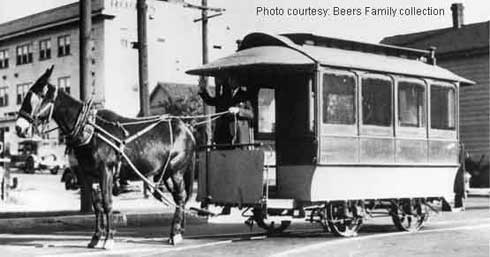
A good friend of mine emailed me a story of the history of railroad track widths. The gist of the story (which in full can be read here) is that the standard American Rail gauge (the 4′ 8.5″ between the tracks) can be traced back to the width of two horses’ asses. The tale goes that the railroad track widths were first based on standard wagon cart widths, which date back to Roman military cart widths (especially in England), which were determined by the width of two average Roman horses to pull such wagons. After some online snooping I wanted to see if there was any validity to this legend. While the legend has some truth to it, it’s quite a bit exaggerated.
One rumor-busting website answered the question of the history of rail gauges with the following passage:
Carts on rails had been used in mines in England for years, but the width of the rails varied from mine to mine since they didn’t share tracks. Stephenson was the one who started experimenting with putting a steam engine on the carts so there would be propulsion to pull them along. He had worked with several mines with differing gauges and simply chose to make the rails for his project 4-foot, eight inches wide. He later decided that adding another six inches made things easier. He was later consulted for constructing some rails along a roadway and by the time broader plans for railroads in Great Britain were proposed, there were already 1200 miles of his rails so the “Stephenson gauge” became the standard.
Interestingly, the 4-foot, eight-and-a-half inch width has not always been the standard in the U.S. According to the Encyclopedia of American Business History and Biography, at the beginning of the Civil War, there were more than 20 different gauges ranging from 3 to 6 feet, although the 4-foot, eight-and-a-half inch was the most widely used. During the war, any supplies transported by rail had to be transferred by hand whenever a car on one gauge encountered track of another gauge and more than 4,000 miles of new track was laid during the war to standardize the process. Later, Congress decreed that the 4-foot, eight-and-a-half inch standard would be used for transcontinental railway.
It will also be noted that rail gauges are not uniform within the old Roman Empire, giving less thrust to this theory. Therefore, carts that the Romans used may have very well set some standards that affected transportation for much of Western history, but they are not the sole reason that railroad tracks in the US and England are the way they are.
May 24, 2011 at 10:07 pm
Perhaps you should investigate the word “standard”. You haven’t debunked this theory at all.